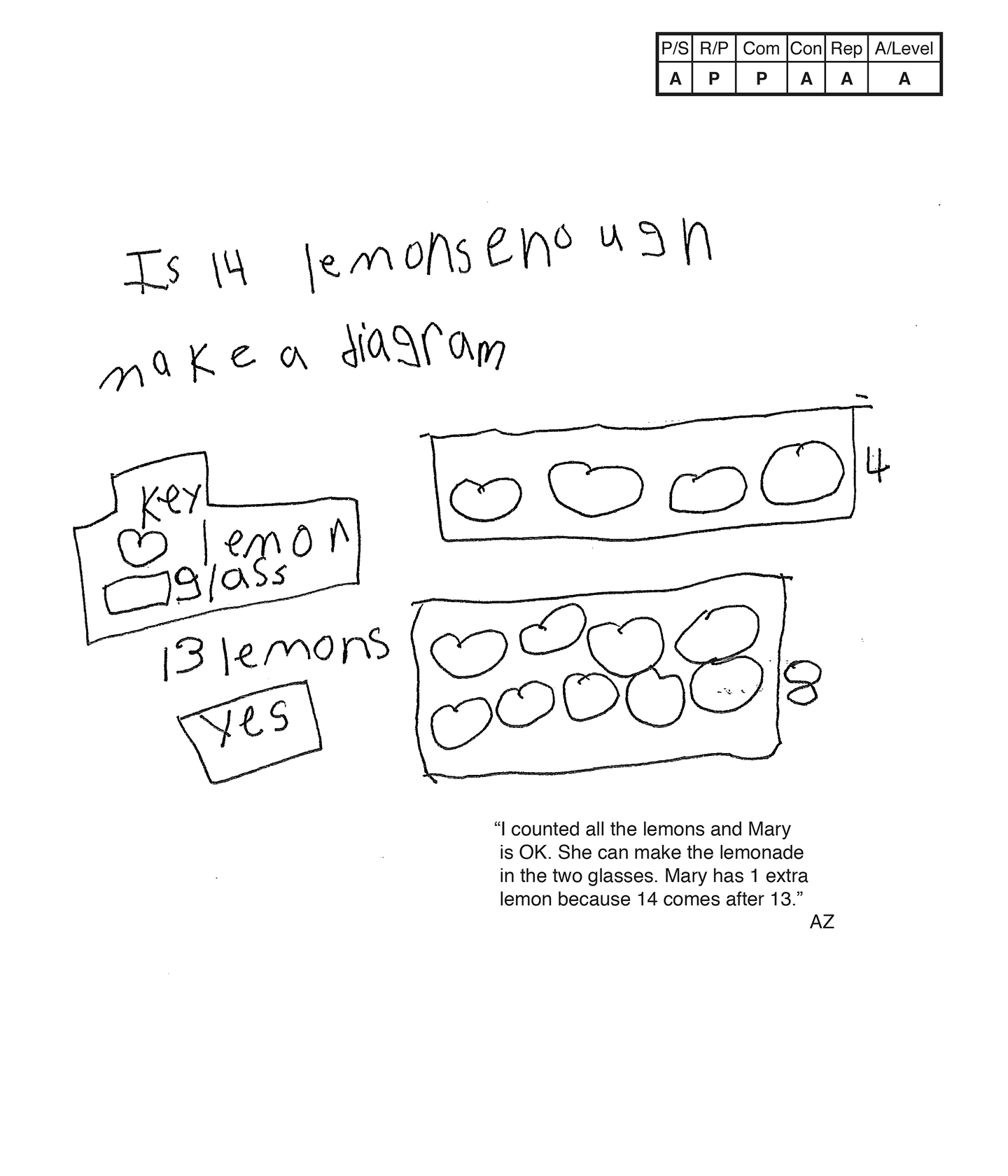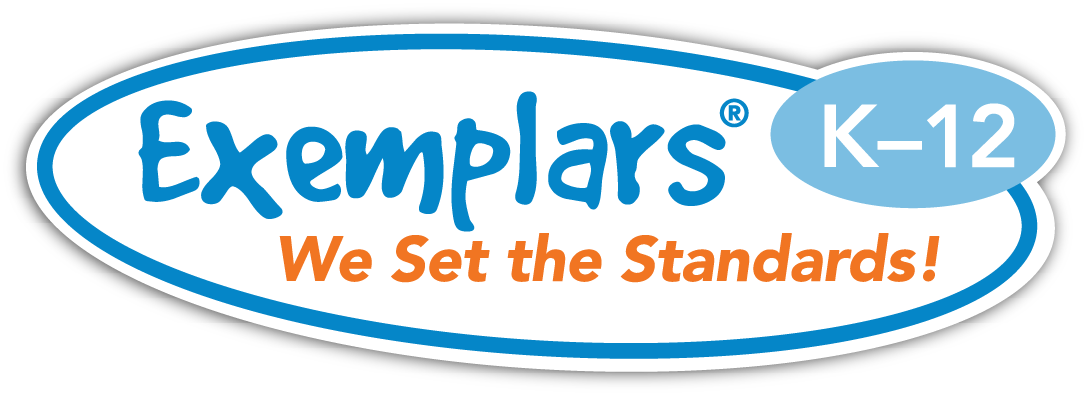
The student's strategy of using a diagram to record how many lemons are needed to make a small and a large glass of lemonade, finding a total of lemons and comparing that total to Mary's fourteen lemons, would work to solve the task. But, the student diagrams an extra lemon in the large glass of lemonade. The student's answer, "Yes," is not correct because it is based on incorrect data.
The student shows correct reasoning of the underlying concepts of the task. The student demonstrates understanding of four lemons to one glass, eight lemons to one glass, finding the total number of lemons needed, and comparing that total to fourteen lemons. The student diagrams nine lemons in the large glass which leads to an incorrect total of thirteen lemons to compare to Mary's total of fourteen lemons. This is considered a careless error and not a flaw in the student's reasoning.
The student correctly uses the mathematical terms diagram and key.
The student attempts to make a mathematically relevant observation, but it is based on an incorrect diagram. The student states, "Mary has one extra lemon because fourteen comes after thirteen." The correct connection is two extra lemons.
The student's diagram is appropriate to the task, but is not accurate. The student diagrams an extra lemon in the large glass. A key defines the lemons and glasses.

